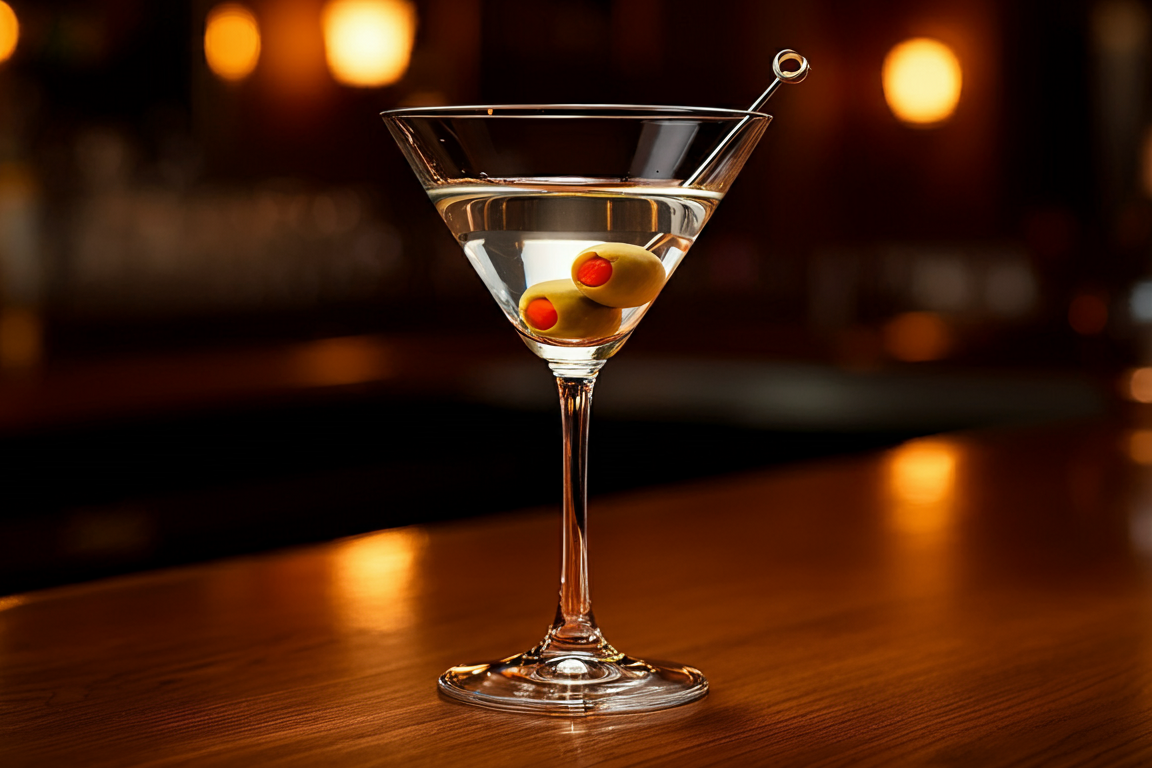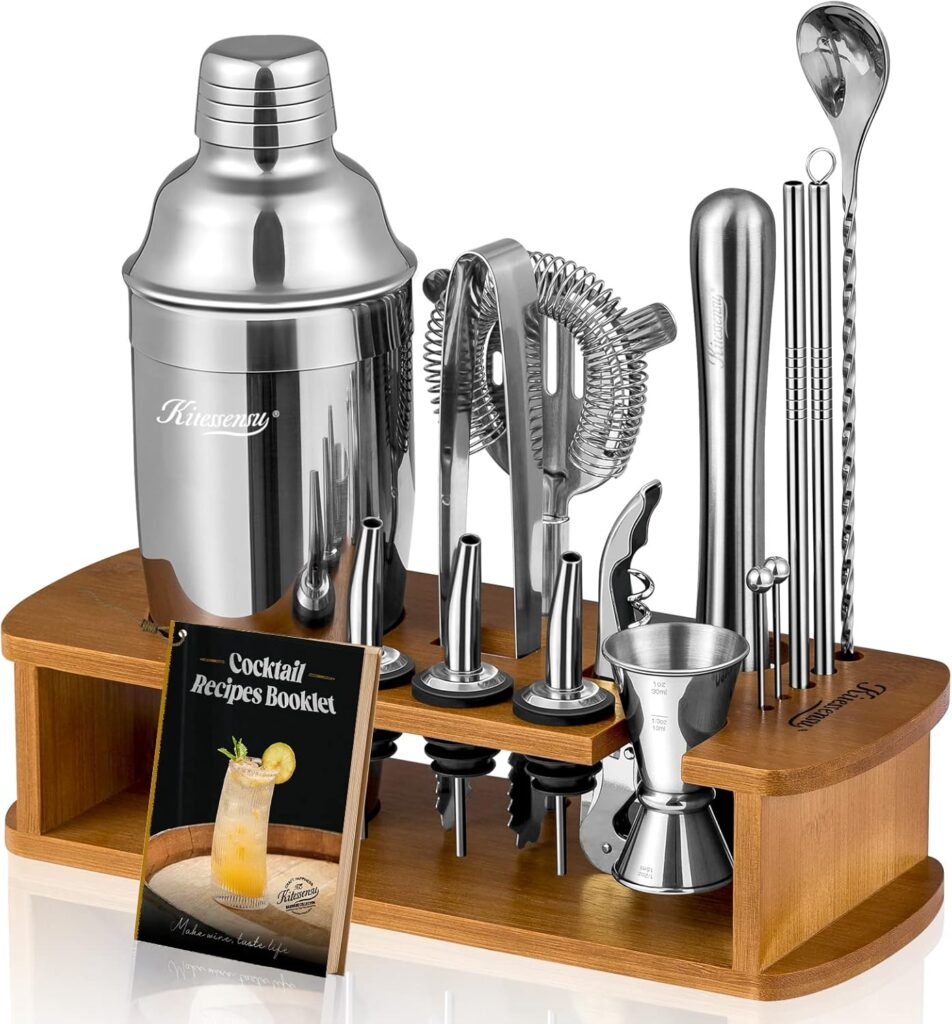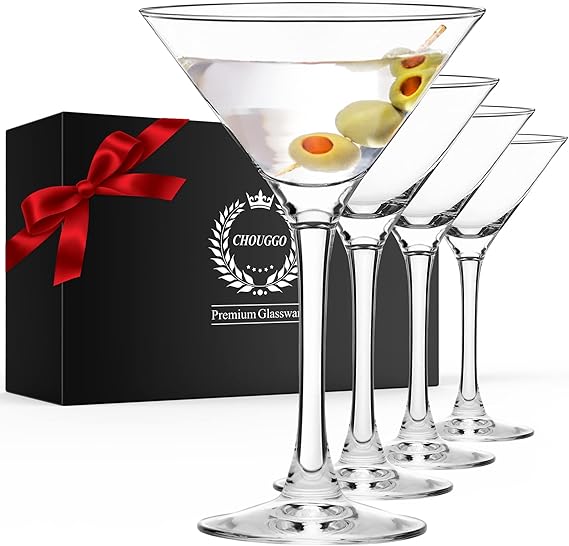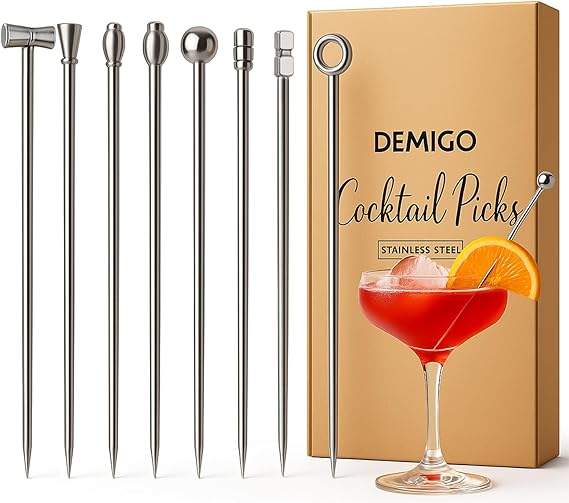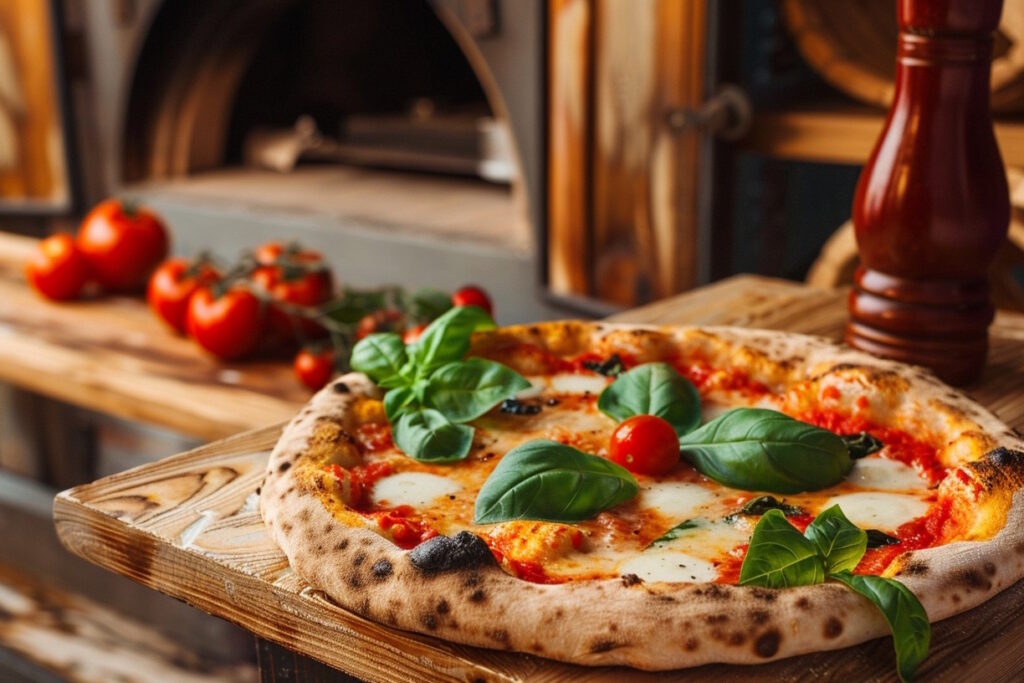The Martini stands as the quintessential cocktail—a perfect balance of strength and elegance served in its distinctive glass. It’s not merely a drink but a cultural touchstone that has survived Prohibition, evolved through decades of changing tastes, and maintained its position as the sophisticated sipper’s choice. From Wall Street power lunches to Hollywood’s golden age, the Martini has been there, garnished and ready.
Origins: Chasing the Martini’s Elusive Birth
Like many classics, the Martini’s true genesis remains contentious. Cocktail historians generally point to several plausible origin stories, each adding to the mystique of this deceptively simple concoction.
The most widely accepted theory traces the Martini back to its ancestor, the Martinez—a sweeter, more complex cocktail invented in the 1860s. According to local lore, a gold miner in Martinez, California, who had struck it rich celebrated by ordering champagne at a local bar. When the bartender had none to offer, he instead mixed up a special drink with what he had on hand: gin, vermouth, bitters, and maraschino liqueur—dubbing it the “Martinez Special.”
Famed bartender Jerry Thomas included a recipe for the Martinez in his groundbreaking 1887 book, “The Bar-Tender’s Guide,” giving the drink legitimacy in print. Thomas’ recipe called for Old Tom gin (sweeter than London Dry), sweet vermouth, maraschino, and bitters—far more ornate than today’s streamlined version.
The competing New York theory suggests Italian immigrant bartender Martini di Arma di Taggia created the cocktail at the Knickerbocker Hotel around 1911. His version—supposedly mixed for John D. Rockefeller—used equal parts London dry gin and dry vermouth with a lemon twist, marking an evolutionary step toward the drier Martini we know today.
Some etymologists propose a simpler explanation: the name may derive from Martini & Rossi vermouth, which became widely available in America in the late 19th century. As drinkers increasingly ordered their gin “with Martini,” the name might have naturally shortened to simply “Martini.”
By the Prohibition era (1920-1933), the Martini had already begun its journey toward dryness. The quality of bootlegged gin was often questionable, making less vermouth a practical choice. Following Repeal, the Martini emerged as America’s cocktail of choice—celebratory, potent, and undeniably sophisticated.
The Evolution: From Sweet to Bone Dry
The Martini’s evolution through the 20th century tells a fascinating story of American drinking culture. In its early incarnations, the Martini contained nearly equal parts gin and vermouth—a ratio unthinkable to modern palates accustomed to much drier versions.
By the 1950s, the typical recipe had shifted dramatically to 3:1 or 4:1 ratios. The post-WWII era’s fascination with efficiency and technological precision extended to cocktails; a “perfect” Martini became a matter of scientific exactitude. The trend toward dryness accelerated through the mid-century, famously captured in Luis Buñuel’s observation: “A dry Martini should resemble the Mongolian desert, with the vermouth being the distant mirage.”
Today’s ultra-dry preferences have spawned colorful ordering terminology. Beyond “extra dry,” bartenders now receive requests for:
- The “in and out” (rinse the glass with vermouth, then discard)
- The “Churchill” (merely glance at the vermouth bottle or bow in the direction of France)
- The “Montgomery” (15:1 ratio, supposedly matching Field Marshal Montgomery’s preferred odds before engaging enemy forces)
Each increment of dryness represents another chapter in the Martini’s evolution from sweet Victorian indulgence to modern minimalist statement.
The Great Debates: Questions That Define Your Martini
Gin vs. Vodka: A Cold War in a Cocktail Glass
Perhaps no aspect of Martini culture inspires more passionate debate than the choice between gin and vodka. Traditionalists maintain that only gin—with its complex botanical profile providing counterpoint to vermouth’s herbal notes—constitutes a proper Martini. British writer H.L. Mencken famously called the Martini “the only American invention as perfect as a sonnet,” but he specifically meant the gin version.
The vodka Martini gained prominence in the 1950s and ’60s, coinciding with vodka’s rise in American drinking culture. The Cold War paradoxically made Russian spirits fashionable, and vodka’s neutrality appealed to mid-century palates. When Ian Fleming had James Bond request his Martini “shaken, not stirred” in the 1953 novel “Casino Royale,” he specifically mentioned vodka, helping cement the variation’s legitimacy.
Today, both versions coexist, though ordering a “Martini” without specification typically gets you the gin version. The vodka variant usually requires an explicit request for a “Vodka Martini.”
Shaken vs. Stirred: Science and Superstition
Bond’s preference for shaken Martinis has shaped popular understanding of the cocktail, but most bartenders consider it cocktail heresy. Why? The science is clear: shaking introduces tiny air bubbles and ice fragments, resulting in a temporarily cloudy drink with a different mouthfeel. More importantly, aggressive shaking can “bruise” gin, releasing bitter compounds from the botanicals.
Stirring, by contrast, chills and dilutes the drink more gently, preserving clarity and allowing the spirits’ subtle flavors to harmonize. As cocktail authority Dale DeGroff notes, “Stirring is gentler on the spirits and creates the silky texture that’s essential to a proper Martini.”
Bond’s preference might have made sense for a vodka Martini (less affected by shaking) or perhaps reflected Fleming’s understanding that shaking would render the drink colder—important for an agent who might need to set his glass down frequently while surveilling a target.
Garnish Wars: The Final Touch
The choice of garnish significantly impacts the drinking experience, both aromatically and flavorfully:
- Olive: The classic garnish adds a savory, briny undertone. Spanish queen olives are traditional, though stuffed varieties (blue cheese, pimento, garlic) have loyal followings. Using olive brine creates the popular “Dirty Martini,” beloved by Madonna and reportedly Franklin D. Roosevelt’s preferred preparation.
- Lemon twist: Offering bright citrus oils that float atop the cocktail, the twist provides an entirely different aromatic experience. Before serving, bartenders often express the oils over the drink’s surface by twisting the peel, sometimes rubbing it along the rim for additional fragrance.
- Cocktail onion: This transforms the drink into a Gibson, reportedly named after illustrator Charles Dana Gibson or diplomat Hugh Gibson. The pickled onion adds a sharp, vegetal quality that complements the botanical elements of gin.
- Other innovations: Modern craft bartenders experiment with everything from rosemary sprigs to pickled ramps, though most Martini purists consider these flourishes unnecessary.
The Three-Martini Lunch: America’s Lost Midday Ritual
Few drinking customs better exemplify the mid-century American business culture than the three-Martini lunch. This extended midday meal—fueled by multiple stiff drinks—was once standard practice among executives, advertisers, and dealmakers in major cities.
The practice reached its apex in the 1950s and ’60s when expense accounts were fully tax-deductible and face-to-face meetings were essential for business. Restaurants like New York’s “21” Club and San Francisco’s Tadich Grill specialized in facilitating these boozy negotiations, with discreet waitstaff who knew exactly when to bring the next round without asking.
The three-Martini lunch became so embedded in American business culture that it became a political issue. During his 1976 presidential campaign, Jimmy Carter criticized the practice as a tax loophole for the wealthy. His opponent, Gerald Ford, famously retorted that “the three-Martini lunch is the epitome of American efficiency. Where else can you get an earful, a bellyful and a snootful at the same time?”
Despite Ford’s defense, the era was already waning as corporate culture shifted toward greater sobriety during working hours. By the 1980s, fitness culture and increasing workplace demands made extended alcohol-laden lunches increasingly rare. Today, the three-Martini lunch exists primarily as a nostalgic relic of an earlier business era, occasionally revived for special celebrations but no longer part of daily corporate life.
The Art of the Perfect Martini
Creating the quintessential Martini involves both technique and quality ingredients:
Ingredients
- 2½ oz high-quality gin (London Dry style like Beefeater, Tanqueray, or Plymouth) or vodka
- ½ oz dry vermouth (Dolin Dry, Noilly Prat, or Martini & Rossi Extra Dry)
- Ice (large, clean cubes)
- Garnish of choice: green olives, lemon twist, or cocktail onions
Equipment
- Mixing glass
- Bar spoon
- Julep strainer or fine mesh strainer
- Chilled Martini glass or coupe
Method
- Pre-chill your glass by filling it with ice and water or placing it in the freezer for at least 10 minutes. A properly cold glass keeps the Martini at optimal temperature longer.
- Measure precisely. The Martini rewards exactitude—even small variations in proportion create noticeably different drinks.
- Fill your mixing glass with ice. Use fresh, hard ice cubes free from freezer odors.
- Add vermouth first, then gin or vodka. Some bartenders “rinse” the glass with vermouth instead, coating the inside before discarding excess.
- Stir gently but thoroughly for about 30 seconds (longer for a colder drink). Avoid aggressive stirring that might chip the ice.
- Strain into your chilled glass. A clean pour without ice shards is essential.
- Garnish thoughtfully. Add olives (typically an odd number—one or three), express and add a lemon twist, or add cocktail onions for a Gibson.
Variations Worth Mastering
- 50/50 Martini: Equal parts gin and vermouth, closer to the drink’s original formulation
- Perfect Martini: Uses equal parts sweet and dry vermouth
- Vesper: Bond’s original order from “Casino Royale”—gin, vodka, and Lillet Blanc
- Dirty Martini: Includes olive brine for a savory, saline quality
- Gibson: Garnished with cocktail onions instead of olives or lemon
The Martini in Culture: Beyond the Cocktail
Few drinks have permeated popular culture like the Martini. Its elegant silhouette appears as a visual shorthand for sophistication in countless films and advertisements. The cocktail has been embraced by figures as diverse as Ernest Hemingway, Franklin D. Roosevelt, Alfred Hitchcock, and Dorothy Parker, whose famous verse warned: “I like to have a Martini, two at the very most. After three I’m under the table, after four I’m under my host.”
The Martini glass itself has become an iconic design element, appearing in neon signs for cocktail lounges and as the universal symbol for “bar” on maps and signage worldwide. The distinctive V-shaped glass (technically a cocktail glass, though commonly called a Martini glass) was likely designed during Prohibition to allow drinkers to quickly dispose of illegal alcohol if necessary—the wide opening making it easy to spill the contents.
In film, the Martini often signals a character’s sophistication or worldliness. Beyond Bond’s famous preference, the cocktail makes notable appearances in classics like “The Thin Man” series (where Nick and Nora Charles consume impressive quantities while solving crimes) and “All About Eve,” where Bette Davis delivers the immortal line, “Fasten your seatbelts, it’s going to be a bumpy night” while clutching a Martini.
Alfred Hitchcock built an entire filming technique around the cocktail. His “Hitchcock zoom” (or dolly zoom) was reportedly inspired by the disorienting sensation of his first Martini. The director later claimed his perfect Martini recipe involved “five parts gin and a quick glance at a bottle of vermouth.”
The Modern Martini Renaissance
After falling somewhat out of fashion during the sweet cocktail craze of the 1980s and ’90s, the Martini has experienced a remarkable resurgence in the 21st century. The craft cocktail movement has brought renewed appreciation for classic preparations, while innovative bartenders continue to find creative variations that honor the drink’s essential character.
Contemporary craft gin producers have expanded the botanical possibilities beyond juniper-forward London Dry styles, creating new potential flavor profiles for the cocktail. Vermouths, too, have experienced a renaissance, with small producers creating complex artisanal versions that warrant more prominent roles in the mix.
For all its elegance and simplicity, the Martini remains deeply personal. Each drinker develops their own perfect specification—a particular gin, a precise ratio, a specific garnish. This personalization makes ordering a Martini an intimate declaration of taste and preference.
Whether you prefer yours bone dry with a twist or perfectly balanced with three olives, the Martini continues to represent the pinnacle of cocktail craft—an enduring symbol of refinement that has maintained its allure for over a century. As writer H.L. Mencken noted, the Martini is “the only American invention as perfect as the sonnet.” In an era of fleeting trends and disposable culture, the Martini’s staying power testifies to its perfect balance of simplicity, strength, and style.

